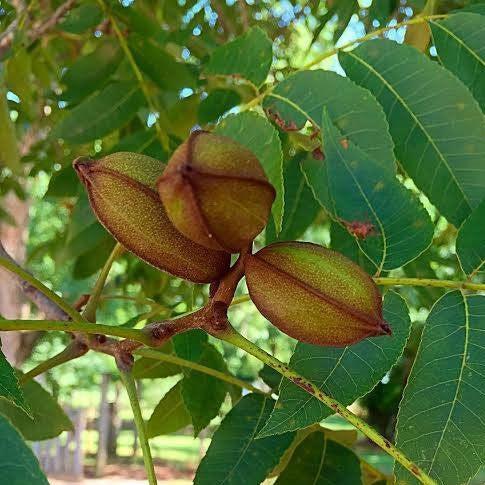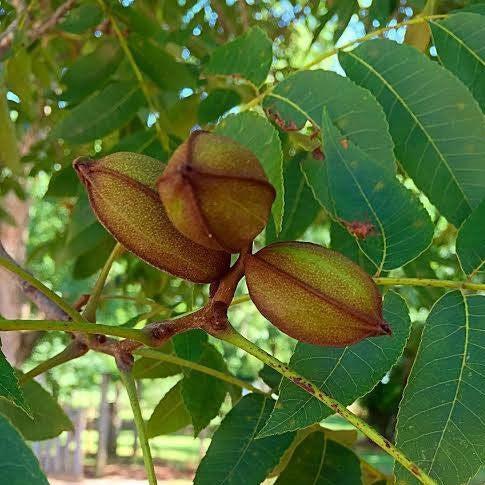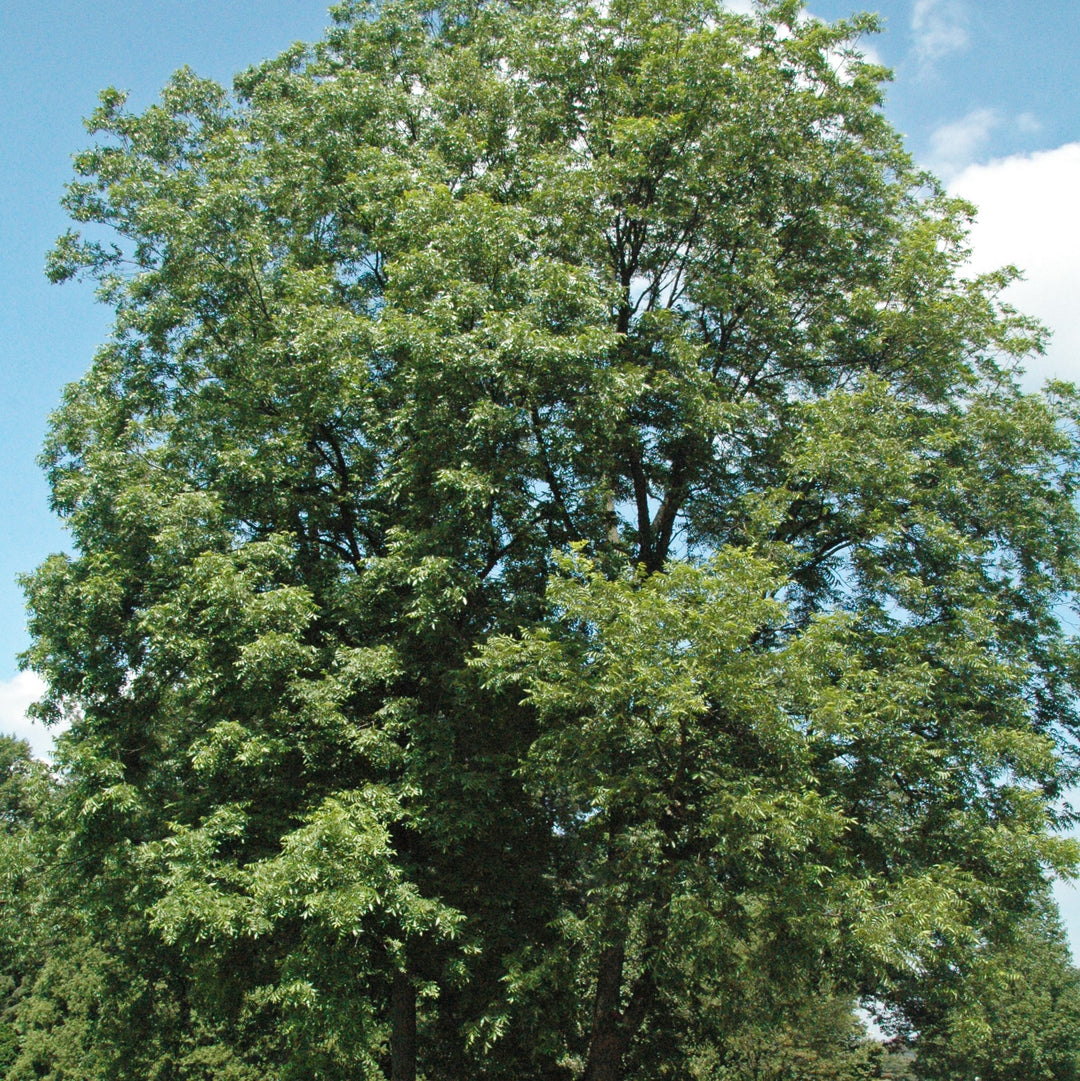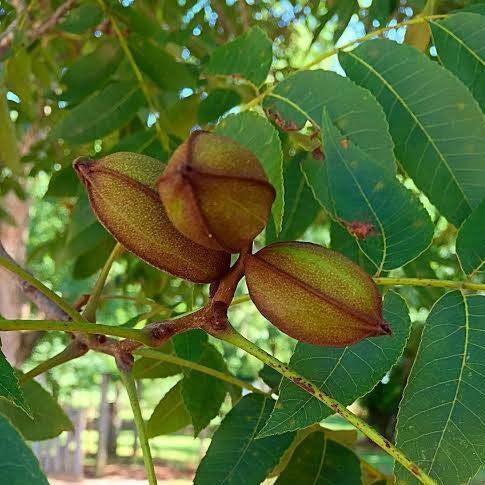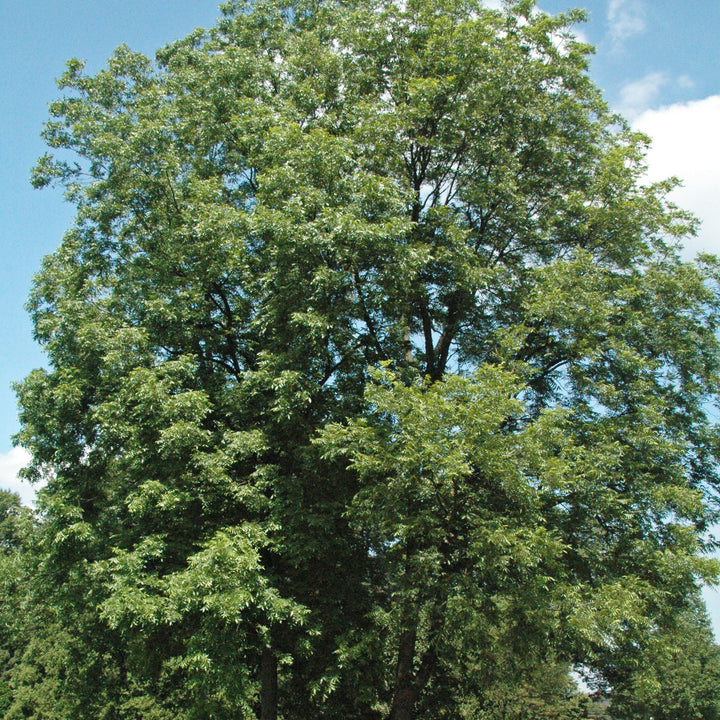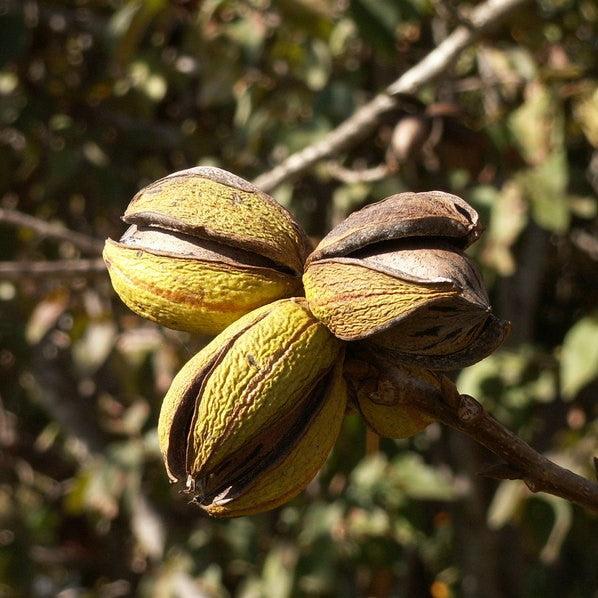Caddo Pecan is a large deciduous tree known for its consistent high quality crop yield even in mature trees. The compound green leaves turn yellow-brown in fall. Caddo matures early, producing a good yield of nuts by 6-8 years that ripens early October. The nuts have a distinctive football shape with the papershell nut pointed at both ends and a golden kernel. Grows best in full sun and rich, moist well-drained soils. It should be noted that Caddo needs a Type II pollinator and susceptible to scab.
|
Type: |
|
|
Origins: |
South Central N. America |
|
Height: |
70’ - 100’ |
|
Spread: |
40’ - 70’ |
|
Spacing: |
60’ |
|
USDA Hardiness Zone: |
6 - 10 |
|
Culture: |
|
|
Bloom Color: |
Green |
|
Season of Interest: |
MAINTENANCE NEEDS: Low maintenance. Difficult to transplant due to taproot. Large trees can produce considerable litter with twigs, leaves, and nuts. No serious disease or pests. Hickory bark beetle, pecan weevil, borers and twig girdler can be problems in some areas. White heart rot, anthracnose, leaf blotch, powdery mildew, leaf spot, cankers, catkin blight, crown gall and scab are occasional diseases.
LANDSCAPE USES: Specimen planting or mass plantings, Woodland Garden, Naturalized Areas, Native Garden, and Shade Tree.
COMPANION PLANTS: Yellow Birch, Oakleaf Hydrangea, Bottlebrush Buckeye
IMAGES: James St. John, Carya illinoinensis (pecan tree) 1, (2) agerpoin, Pecans
*As plants have ranges in appearance they may not appear as the images shown.


